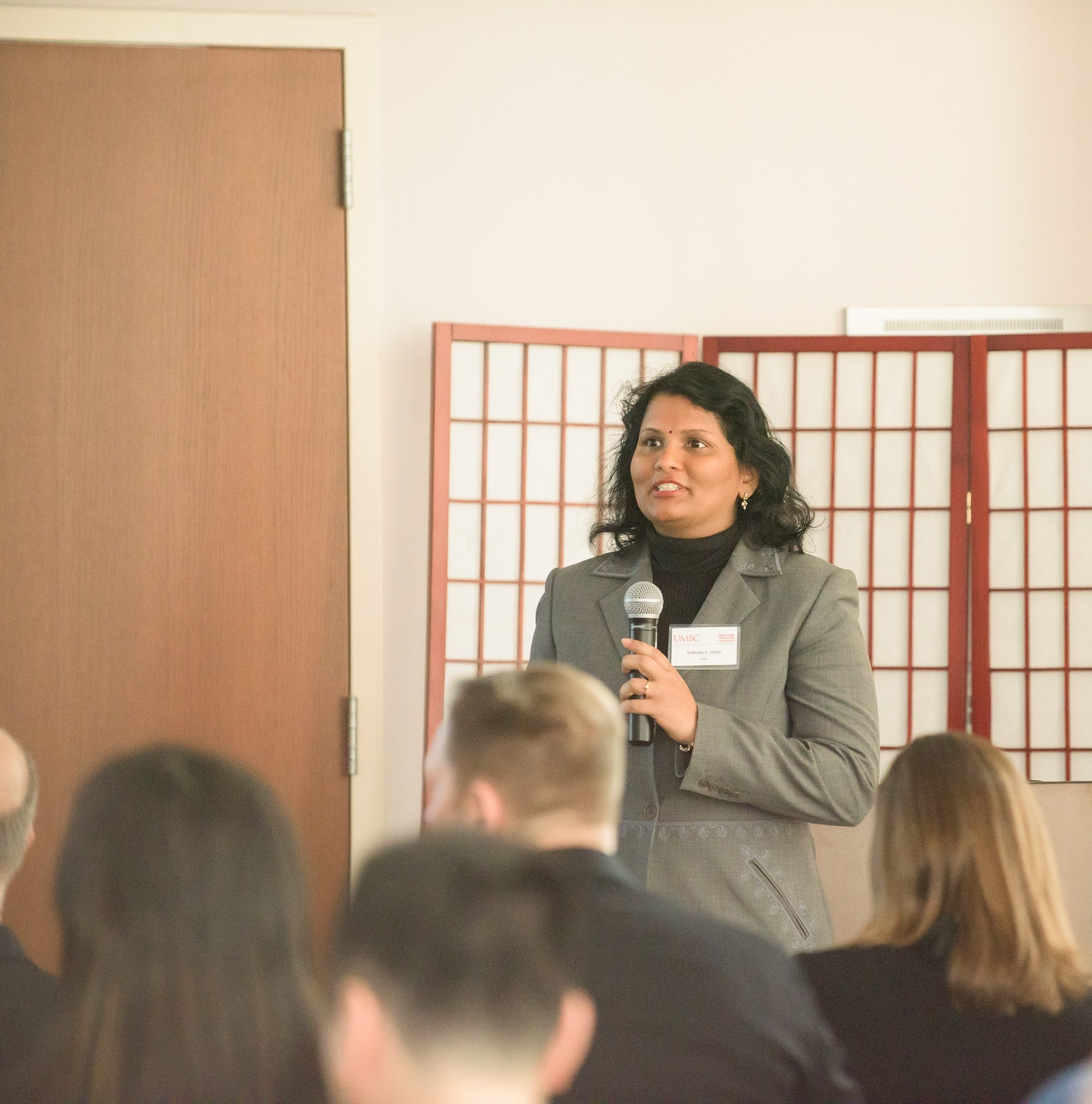UMBC and U.S. Naval Academy (USNA) faculty researchers presented updates on five collaborative cybersecurity projects funded by the Office of Naval Research (ONR) during the inaugural USNA-UMBC Partnership Symposium, hosted by UMBC’s Office the Vice President for Research on March 22, 2016.
The five projects presented are supported by three-year grants from the ONR, most of which are entering their second year of funding.
When the joint research initiative launched a year ago, Karl V. Steiner, vice president for research at UMBC, described it as “the start of a long-term partnership.” The recent symposium was the first formal opportunity for the research teams to formally present their progress on tackling major cybersecurity challenges outlined when the partnership began.
One team is developing a way to ensure that cloud-based storage services are secure, and that consumers can store their files with confidence. UMBC principal investigator (PI) Karuna Joshi, assistant research professor of computer science and electrical engineering (CSEE); Tim Finin, professor of CSEE; and USNA faculty are developing a cloud storage system that will make it impossible for deleted data to be restored or recovered.
Another group is developing a system that can continuously monitor itself and detect potential threats more quickly than human monitors. This technology has important safety as well as security implications. In cars, for example, hackers can gain control of a vehicle through Bluetooth or other existing systems, potentially having deadly effects. UMBC PI Ryan Robucci, assistant professor of CSEE; Chintan Patel, assistant professor of CSEE; Nilanjan Banerjee, associate professor of CSEE; Anupam Joshi, professor and chair of CSEE; and USNA faculty are now completing tests that involve working to detect anomalies in various systems.
Drawing on the finding that many online attacks follow predictable patterns, UMBC PI Tim Oates, professor of CSEE, and USNA PI Nate Chambers, assistant professor of computer science, presented their work on a tool to monitor social media networks, like Facebook and Twitter, in real-time to detect likely attacks. The team is analyzing language trends on social media platforms around the times that previous attacks took place. Regular social media users often notice attacks or threats of attacks first, and by analyzing and characterizing the content of their posts on “normal days” compared with “attack days” the team is developing a way to automatically generate an alert when real-time social media posts indicate a possible attack.
Understanding the strengths and limitations of the range of existing mobile authentication methods is important in protecting individuals’ devices from getting hacked. UMBC PI Ravi Kuber, associate professor of information systems, and USNA faculty are studying the strength of various authentication tools on Android devices to develop new methods that use tactile cues, like vibrations, to authenticate mobile devices. The team conducted research to understand authentication practices of people who are conscious of security issues, and the susceptibility of current authentication methods to over-the-shoulder breaches. Kuber and his team developed a secure authentication tool called H4Plock that prompts individuals to enter strokes in response to cues, where response patterns would be unique to an individual user.
The fifth group including UMBC PI Nirmalya Roy, assistant professor of information systems; Todd Pittman, associate professor of physics; James Franson, professor of physics; and several USNA faculty, is working to create quantum computers that can help identify abnormal behavior or patterns at much faster speeds than current computing technology. The team is extracting photons that will then be included in optical fibers to emit light. They are working to pull bundles of optical fibers thinner to create nanofiber cavities.
Don Engel, assistant vice president for research at UMBC, thanked the ONR for their close collaboration and shared his excitement that the research collaborations have already shown such “fruitful findings.”
Image: Karuna Joshi presents during the USNA-UMBC Partnership Symposium. Photo by Marlayna Demond ’11 for UMBC.
Tags: CNMS, COEIT, CSEE, Cybersecurity, IS, Physics, Research

